Collecting Broadway Musical Cast Albums
Photos and Article by Donald-Brian Johnson
Get out those old records,
Those old phonograph records,
The ones we used to play so long ago.
What if they sound scratchy?
The tunes really were catchy
Especially those that said I Love You So
– Carmen Lombardo, “Get Out Those Old Records,” 1951
Quick, now: what’s the last Broadway tune you can recall that propelled itself up the pop music charts?
Was it Judy Collins’ plaintive “Send In The Clowns” (A Little Night Music)? Barbra Streisand’s soulful “People” (Funny Girl)? Maybe it was the 5th Dimension’s rousing “Aquarius/Let The Sunshine In” (Hair), or perhaps Louis Armstrong, cheerfully growling out “Hello, Dolly!” (guess what show that’s from).
Nowadays, you won’t find Taylor Swift, Justin Timberlake, or the rest of the chart-toppers peppering their releases with Broadway ballads. They know what sells, and show tunes aren’t what their fans are clamoring for at the moment. Of course, there are occasional anomalies: Hamilton remains an impossible-to-get-tickets-for-unless-you-shell-out-the-big-bucks Broadway blockbuster. And, those aren’t just theatre diehards filling the seats at Dear Evan Hansen. Joining them are hordes of squealing teens,
captivated by Evan’s catchy tunes and tale of adolescent angst. At the movie theatres, Hugh Jackman’s musical Barnum bio, The Greatest Showman, continues to pack them in. Its soaring anthem “This Is Me,” (written, incidentally, by Evan Hansen’s composing duo, Benj Pasek and Justin Paul) has become a dance club staple.
Gosh. Folks singing show tunes, making the world sit up and take notice. Things like that just don’t happen every day.
But once upon a time, they did.
“People Will Say We’re In Love” …
“76 Trombones” … “The Impossible Dream” … “Tomorrow” … “I Could Have Danced All Night”
You may never have seen a Broadway musical in your life. You may have a tin ear or a voice like a frog, but there’s no denying it: you know these songs. You know them because, for decades, these showstoppers, and countless more like them, were what popular music was all about.
Nowadays, we call them “the standards.” They were popularized by big bands, belted out on the radio, and given the Hollywood treatment. Bing, Frank, and Perry sang them. So did Judy, Doris, and Dinah. For entertainers of the mid-twentieth century, Broadway was an inexhaustible gold mine. Performers gave their unique “takes” on show tunes, and we happily listened to the results. On records.
Records. There’s a quaint old-timeyness to the word, as much a part of the past as spats and the monocle. But almost until the millennium, when CDs and other digital storage media made them passé, records ruled. LPs, (and their even mustier predecessors, the 78s), were how America got its music. If you wanted to hear the latest hit song, there was no downloading. You bought the record, and switched on the hi-fi. And, if you wanted to hear the latest Broadway hit songs, “just as performed on the New York stage,” you bought the original cast album.
“Give My Regards to Broadway”
The earliest cast albums were recorded in England and were, oddly enough, of American shows with their London casts (Show Boat, in 1928, was one of the first). Until the introduction of the LP (long play) record in 1948, recording a show was an unwieldy process. A 78-rpm disc could only hold between 3-1/2 and 4-1/2 minutes of music per side. Recording a show’s entire score would have required many more 78s than the 5 or 6 that could conveniently be packaged in a set. Less notable songs went unrecorded or, at any rate, unreleased. Features considered non-essential, such as overtures, instrumental breaks, and verses, were truncated or eliminated. And, while leading performers were usually called upon to repeat their stage successes for listening posterity, the chorus and orchestra were often just assembled for the recording, and had no connection to the stage presentation.
In 1943, Decca released the first recording that could truly be billed as featuring the original Broadway cast: Rodgers and Hammerstein’s Oklahoma! As before, the leads were the Broadway originals – but so were the chorus, the orchestra, and even the conductor. Issued as a set of 78s, Oklahoma! sold over one million copies. If you saw the show and loved it, reliving the musical thrills was now as close as your record player. (And if you couldn’t get tickets, you could at least hear what everyone else was talking about!)
The Broadway cast album was in its ascendancy … and a new collecting trend was born.
Soon, it seemed as if every show was being committed to record. The debut of the LP, with a playing time of 40-50 minutes, meant that more of a show’s score could be preserved, in approximately correct running order – all on one disc. There were the hits, such as West Side Story, South Pacific, and My Fair Lady; the semi-hits, such as 1960’s Wildcat (its main selling point -TV’s “Lucy,” a.k.a. Lucille Ball, croaking her way through the bouncy “Hey, Look Me Over”); and lots and lots of no-hits-at-all, such as I Had A Ball, starring non-singing comic Buddy Hackett, and a musicalization of Gone With The Wind (known as Scarlett when it had its world premiere in Japan), complete with an onstage burning of Atlanta.
Although using the original cast was now the norm, there were occasional slip-ups. In 1950, RCA acquired the rights to record Call Me Madam, but star Ethel Merman was under contract to Decca. RCA went ahead and recorded an original cast album anyway, with Dinah Shore taking Ethel’s role. Ethel delivered her own Decca release, a studio cast filling in for her Broadway colleagues. Neither cobbled-together version sold well.
“Hooray for Hollywood”
Scores of movie musicals were also recorded, but there’s an important distinction. Original cast albums refer to recordings made of a stage presentation, generally recorded in a studio, soon after a production’s opening. The goal: to create an accurate representation of what would be heard in the theatre, minus glitches and, in most cases, audience response.
An “original Broadway cast album” means that the show played on the Great White Way with substantially the same personnel as heard on the recording. A “studio cast” recording indicates performers have simply been selected for the recording session, with no inherent attachment to a specific production. And, if you write a musical that makes its debut in Hoboken and are lucky enough to have it recorded there, you’ll certainly wind up with an original cast album … just not an original Broadway cast album.
A movie recording is a “soundtrack,” its selections taken from tracks pre-recorded for the film. Although the goal is to present what audiences have seen and heard onscreen, there are exceptions. Sometimes, pre-recorded songs are edited or cut entirely before a movie opens due to time limitations or artistic considerations. You can watch Meet Me In St. Louis over and over, but you’ll never see Judy Garland sing “Boys And Girls Like You And Me,” although it’s on the album. While pre-recorded (and even filmed), the song was deleted before the premiere.
Make no mistake about it: during the 1950s and ’60s, Broadway cast albums were very, very popular. Just thumb through the records on offer at nearly every garage sale. Chances are, you’ll find well-played copies of such past Broadway blockbusters as The Music Man, My Fair Lady, and Funny Girl. Each reigned for a time in the #1 spot of Billboard’s list of album best-sellers. And what would a collection of cast albums be without The Sound of Music? In 1960, the Mary Martin-led stage recording, decked out with a “deluxe gatefold jacket,” spent 16 weeks at #1. (1965’s movie soundtrack recording, starring Julie Andrews, did even better: to date, it’s sold over ten million copies.)
The Sound of Music is a good case in point for puzzling out just why folks collect Broadway cast albums. Since the show’s opening night in 1959, over 60(!) different versions of The Sound of Music’s score have been recorded, including renditions in Spanish, Italian, French, and German, plus the original Brazilian cast vocalizing “Do-Re-Mi” in Portuguese. There’s even a specialty release featuring the Trapp Family Singers, whose dramatic life story provided the musical’s inspiration. The distinct subtleties of each Sound of Music recording exemplify what constitutes the Broadway musical collecting field.
The determined cast album collector wants to acquire every variation. Why? Because they’re out there.
“Another Op’nin, Another Show”
When the CD made its appearance in the 1980s, musical fans were overjoyed. Approximately 80 minutes of a new show’s score, (even more on double-disc sets), could now be immortalized. Dialogue intros, instrumental breaks, and even “cut” numbers created a comprehensive theatrical experience. There were also re-issues of shows originally released on 78s, (with missing numbers restored), plus re-issues of older, lesser-known productions, previously available only on hard-to-find, pricey, LPs.
Even in their tiny boxes, Broadway musical CDs retain a sense of tradition. Little booklets filled with show photos, original art, anecdotes, and song lyrics are tucked inside. It may take a magnifying glass, but reading a CD insert is almost as satisfying as reading the liner notes on the back cover of an LP. Almost.
As with every collecting field, cast album collectors often broaden their horizons by acquiring collateral materials. There are promo recordings provided to radio stations in hopes of receiving a free plug: pre-recorded response tracks by the show’s stars were played after the DJ’s scripted “live” questions, giving the semblance of an in-person interview. (Ask the wrong question, and the results could be disastrous!) There are also “pirated” recordings, surreptitiously recorded during live performances (invariably of short-lived shows). Nowhere else will you hear the legendary Bette Davis snap “Be quiet! I don’t need any help” as a fellow cast member tries to feed her a missed song cue during a performance of the flop, Miss Moffat.
Thanks to the CD proliferation in recent years, prices of original cast LPs have dropped drastically. Even the rarest rarely top $100, and most can be acquired for less than $20. (New musical CDs average $15-20). And, while such hallowed record-hunting shops as New York’s Colony and Footlights have closed their doors, the competition that helped lead to their closings thrives. Hundreds of musical cast albums appear every day at such online sites as eBay, Amazon, and the online-only reincarnation of Footlights.
Happy listening!
Get out those old records-
They were wonderful then
Play them over again
The ones we used to play so long ago!
Donald-Brian Johnson is the co-author of numerous Schiffer books on design and collectibles, including Postwar Pop, a collection of his columns. His record collection includes over one thousand cast albums. Please address inquiries to: donaldbrian@msn.com

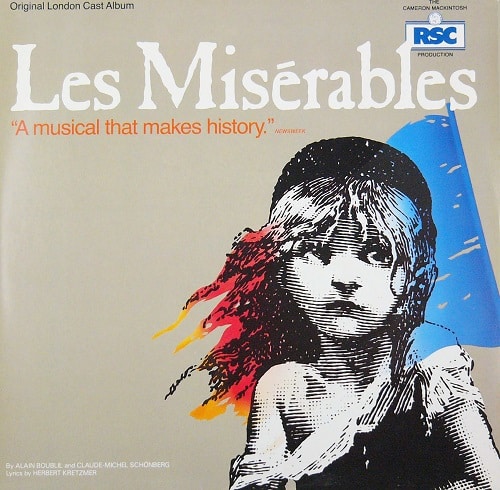
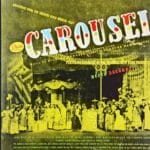

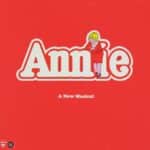
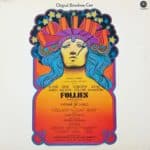
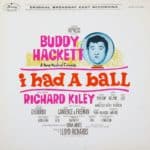

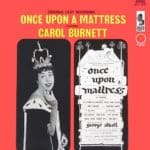
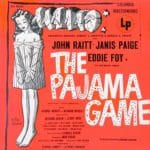
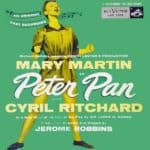
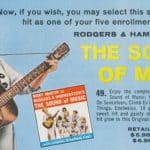
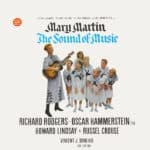
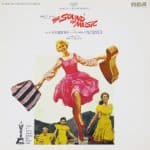
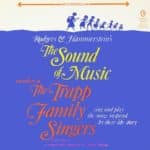


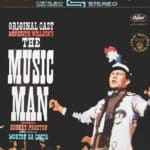

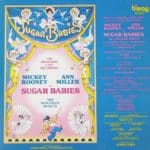
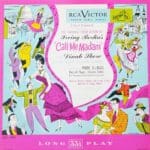
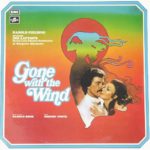
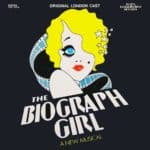
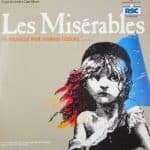

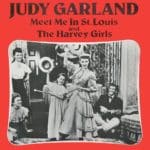

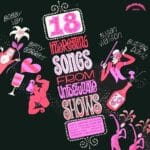



Related posts: